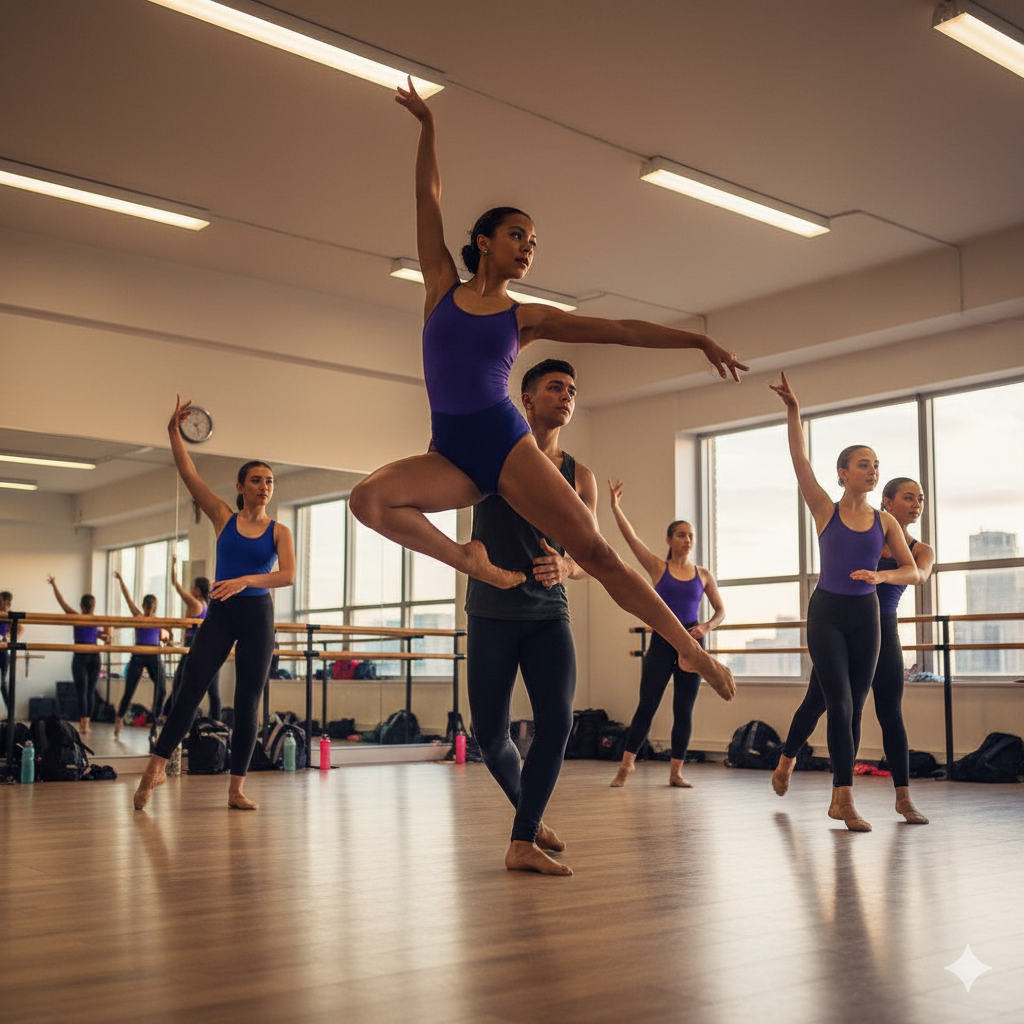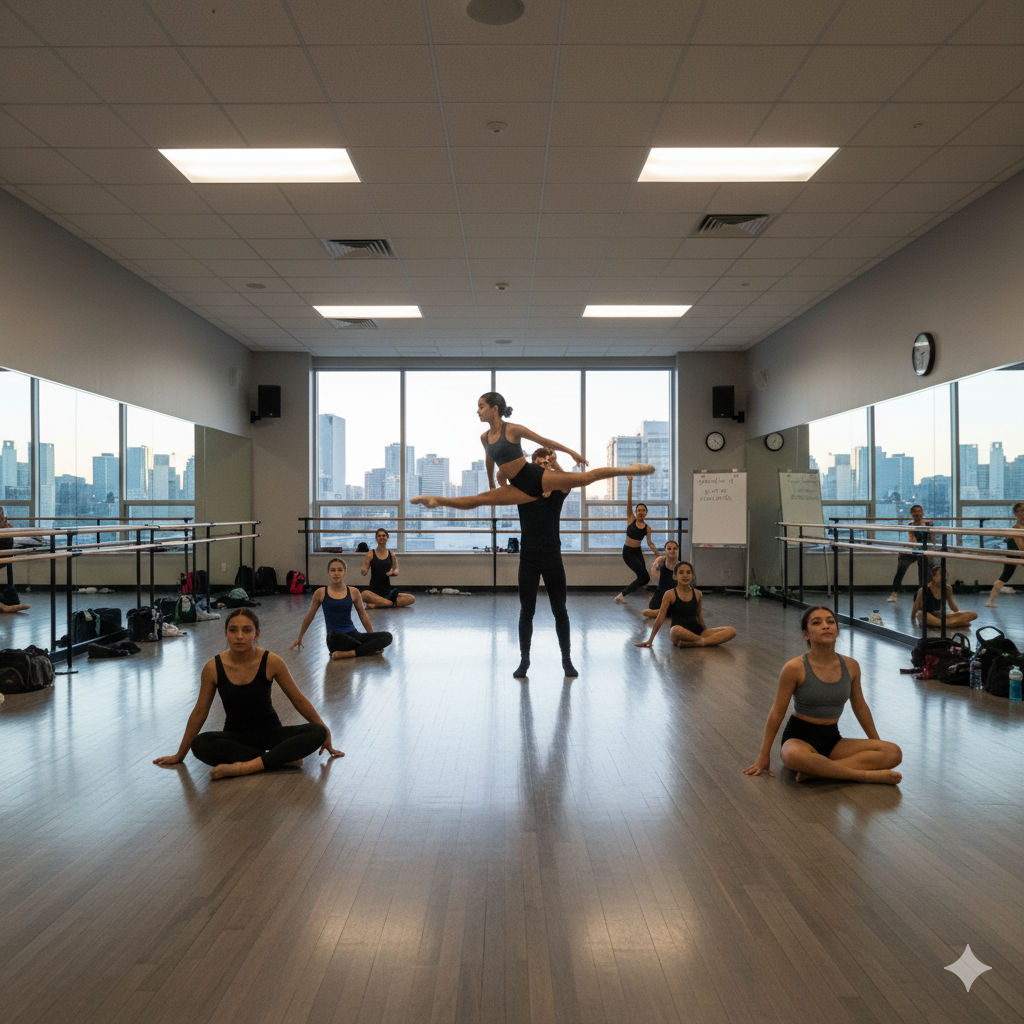Competition Dance Training: Nurturing Talent, Discipline, and Cultural Empowerment

Dance is not merely a form of art—it is an expression of life, emotion, and rhythm. In recent decades, competition dance training has emerged as a powerful movement that blends creativity, discipline, and performance excellence. From grassroots academies to international arenas, the structured training of competitive dance has transformed how dancers learn, perform, and evolve. This in-depth exploration looks at the history, framework, regional impact, and social empowerment linked to the growth of competition dance training.

Understanding the Essence of Competition Dance Training
Competition dance training refers to a structured and intensive form of dance education that prepares individuals or groups to participate in competitive platforms—ranging from local dance championships to global contests. It focuses not only on technique but also on artistic interpretation, teamwork, fitness, and mental endurance.
The concept bridges artistic creativity with athletic discipline. It is a space where dancers refine their performance quality under professional guidance, building confidence, precision, and resilience. Today, competition dance training has become a vital part of performing arts education, offering career pathways and community development opportunities alike.
The Historical Roots of Competitive Dance
The journey of competitive dance can be traced back centuries. Ancient civilizations used dance as a tool of storytelling, ritual, and community bonding. However, the modern form of competition dance training took shape in the early 20th century with ballroom competitions in Europe and North America.
With the advent of television and digital platforms, competitive dance styles like hip-hop, contemporary, ballet, and folk-fusion gained global visibility. Dance reality shows further popularized the concept of training centers dedicated specifically to preparing dancers for national and international competitions.
In countries like India, the USA, and South Korea, dedicated academies began integrating regional cultural influences, giving birth to a hybrid dance identity—one that respects tradition while embracing innovation.
Objectives of Competition Dance Training
The objectives of competition dance training go beyond performance. They serve personal, educational, and socio-economic goals:
-
Skill Development: Enhancing dance techniques, rhythm awareness, flexibility, and body control.
-
Confidence Building: Training performers to express emotions authentically on stage.
-
Cultural Preservation: Integrating folk, classical, and regional styles into modern choreography.
-
Career Pathways: Opening doors to professional dance careers, teaching, choreography, and entertainment industries.
-
Community Engagement: Promoting inclusivity and social welfare through artistic collaboration.
-
Physical and Mental Fitness: Encouraging discipline, endurance, and stress management through structured training routines.
These objectives highlight how dance competitions not only produce great performers but also contribute to holistic personal development.
Framework and Structure of Competition Dance Training
The policy framework for dance training, though informal in many regions, often aligns with national and state-level cultural education strategies. A comprehensive competition dance training framework typically includes:
-
Curriculum Design: Dividing training into levels (beginner, intermediate, advanced) and incorporating multiple styles such as ballet, hip-hop, jazz, contemporary, and regional dances.
-
Assessment System: Regular evaluation through mock competitions, performance reviews, and technical grading.
-
Professional Mentorship: Guidance from certified instructors, choreographers, and industry professionals.
-
Cultural Integration: Inclusion of folk and regional dance elements to promote cultural identity.
-
Wellness and Fitness Modules: Incorporating yoga, pilates, and physical conditioning.
-
Performance Opportunities: Showcases, recitals, and local competitions that prepare students for larger stages.
This structure ensures that every dancer receives balanced training—artistic, physical, and emotional.
Regional Impact of Competition Dance Training
Competition dance training has a significant regional impact—influencing cultural development, employment, and tourism.
In metropolitan areas, dance academies create economic opportunities and nurture creative industries. In rural and semi-urban regions, they play a crucial role in cultural preservation and youth engagement. State cultural departments often collaborate with NGOs and private organizations to bring professional dance training to rural schools and welfare centers.
Such programs encourage rural development by creating livelihood opportunities—trainers, costume designers, sound technicians, and local event organizers all benefit from the dance economy. Moreover, these initiatives empower local women and youth by providing platforms for self-expression and entrepreneurship through art.
Dance Training as a Tool for Women Empowerment
In the broader social context, competition dance training has become a tool for women empowerment. Through structured learning, women gain confidence, independence, and professional skills. Many training institutions now run under women empowerment schemes, providing scholarships, mentorship, and free access to facilities for economically weaker sections.
By participating in dance competitions, women break social barriers, lead community initiatives, and represent cultural strength on national and international stages. Such initiatives align closely with social welfare policies promoting equality, cultural participation, and leadership among women.
Integration with Social Welfare Initiatives
The social dimension of competition dance training cannot be overlooked. Many welfare programs and NGOs have integrated dance into their empowerment agendas, using it as a medium for rehabilitation, therapy, and skill-building.
For instance:
-
Youth Development Programs use competitive dance to divert energy toward positive community engagement.
-
Rehabilitation Centers employ dance movement therapy to support mental well-being.
-
Inclusive Education Projects introduce dance to differently-abled individuals, fostering equality and creativity.
These examples show how competition dance training contributes to social welfare initiatives, making it more than an art form—it becomes a vehicle for social change.
State-Wise Implementation and Benefits
The success of competition dance training often depends on state-level policy frameworks and implementation strategies.
-
Maharashtra and Gujarat have promoted local dance forms like Lavani and Garba through competitive platforms in schools and colleges.
-
Tamil Nadu and Kerala integrate classical dance forms such as Bharatanatyam and Mohiniyattam into state cultural competitions.
-
Punjab and Haryana use Bhangra and Giddha competitions to promote youth engagement.
-
Northeast India showcases Manipuri and contemporary fusion dance through government-sponsored contests.
Such state-wise efforts not only strengthen cultural identity but also create tourism opportunities and boost the creative economy. The collective impact reflects how competition dance training can complement broader regional development goals.
Economic and Cultural Benefits
The economic benefits of competition dance training are multifaceted. Dance studios, event management firms, costume design workshops, and media production houses thrive on competitive dance ecosystems. Local economies benefit from events, workshops, and festivals.
Culturally, these training systems ensure intergenerational knowledge transfer. They preserve folk traditions while allowing new artistic innovations to emerge. This balance between old and new strengthens national cultural integrity and creative diversity.
Moreover, the inclusion of regional and traditional forms within competition frameworks promotes cultural diplomacy, as dancers represent their heritage on international stages.
Comparative Analysis with Other Training Systems
When compared with general dance education or recreational classes, competition dance training stands out in terms of intensity, structure, and outcome.
| Aspect | General Dance Training | Competition Dance Training |
|---|---|---|
| Objective | Recreational, educational | Professional, performance-oriented |
| Structure | Flexible schedule | Highly disciplined, goal-based |
| Outcome | Basic skills, enjoyment | Competitive readiness, career growth |
| Duration | Moderate | Long-term and rigorous |
| Involvement | Individual learning | Teamwork and mentorship |
The competitive model encourages excellence through constant improvement and exposure. It also instills life skills—resilience, teamwork, adaptability—that extend beyond the dance floor.
Challenges in Competition Dance Training
Despite its positive influence, the industry faces several challenges:
-
Accessibility: Many talented dancers from rural backgrounds lack access to professional facilities.
-
Financial Constraints: High costs of costumes, travel, and entry fees deter participation.
-
Lack of Standardization: Absence of unified certification and regulation leads to inconsistent training quality.
-
Health Risks: Physical injuries and burnout are common without proper wellness management.
-
Commercialization: Overemphasis on entertainment can sometimes overshadow cultural authenticity.
Addressing these challenges requires a policy-driven approach, involving collaboration between government bodies, cultural councils, and private organizations.
The Role of Technology and Digital Platforms
Technology has redefined the way competition dance training is delivered. Virtual workshops, online auditions, and digital performance analytics are now common. AI-based motion analysis tools help trainers refine technique, while social media platforms expand exposure.
During global disruptions like the pandemic, digital dance education kept the spirit of competition alive, enabling students to compete and learn remotely. The hybrid model—combining offline and online training—now defines the future of dance education.
Success Stories: From Grassroots to Global Stages
Across the world, numerous success stories reflect the transformative power of competition dance training.
-
India’s Dance India Dance contestants rose from small-town studios to global fame, inspiring millions.
-
US-based teams like The Royal Family and Jabbawockeez built their success on structured competition training.
-
Community initiatives in Africa and Latin America use dance contests to empower youth and reduce social inequalities.
These examples show how competitive dance creates not just performers, but leaders, educators, and changemakers.
Government and Institutional Support
Governments worldwide increasingly recognize the importance of cultural industries. Many have integrated competition dance training into youth development, cultural preservation, and tourism policies.
For example:
-
India’s Ministry of Culture supports zonal cultural centers that host annual dance competitions.
-
The U.S. National Endowment for the Arts funds community dance projects to enhance inclusivity.
-
UNESCO acknowledges dance as a vital component of intangible cultural heritage.
These policy efforts ensure sustainability and international recognition of dance training programs.
Future Prospects of Competition Dance Training
The future of competition dance training lies in integration—of tradition with technology, of creativity with commerce, and of art with social responsibility.
Upcoming trends include:
-
AI-assisted choreography and motion tracking for precision training.
-
Cross-cultural collaborations that blend global and regional forms.
-
Eco-conscious performances promoting sustainability in costume and stage design.
-
Inclusion programs encouraging participation from differently-abled dancers.
By aligning with digital innovation, cultural heritage, and social welfare goals, competition dance training can become a cornerstone of global creative education.
Cultural Diplomacy and Global Outreach
Competitive dance has evolved into a form of cultural diplomacy. International competitions allow dancers to represent their nation’s art and ethos on a global stage. Through cultural exchange programs, foreign collaborations, and international championships, nations strengthen soft power while fostering unity through art.
Competition dance training thus becomes not just a local pursuit but a bridge connecting societies, promoting peace, understanding, and artistic diversity.
The Role of Educators and Mentors
At the heart of competition dance training are the mentors who shape the next generation of artists. They serve not only as teachers but as motivators, guiding dancers through emotional, physical, and creative challenges.
Professional training institutions now emphasize teacher certification, ensuring that educators possess pedagogical knowledge, cultural awareness, and technical mastery. Their role is instrumental in maintaining artistic quality and nurturing ethical competition.
Societal Transformation Through Dance
In broader socio-cultural terms, competition dance training fosters unity, confidence, and inclusivity. It transcends language, religion, and geography—becoming a universal mode of expression. Rural communities find pride in showcasing local dances, while urban youth discover identity through performance.
The ripple effect of competitive dance can be seen in educational reform, mental health awareness, and the strengthening of community bonds. This holistic influence underscores why dance is more than an art—it’s a movement toward human connection and empowerment.
Conclusion
Competition dance training is an evolving cultural ecosystem—a space where creativity meets discipline, and art meets empowerment. Its regional impact, alignment with social welfare frameworks, and contribution to women empowerment make it an indispensable part of modern cultural policy.
As technology, education, and policy continue to converge, the scope of dance training will expand even further—creating stronger, more expressive, and socially conscious generations of dancers. The rhythm of competition, when guided by values of inclusivity and artistry, will continue to shape not just stages but societies.
Frequently Asked Questions (FAQs)
1. What is competition dance training?
It is a structured, goal-oriented dance education system designed to prepare dancers for local, national, or international competitions through technical, artistic, and physical training.
2. How does competition dance training differ from regular dance classes?
Regular dance classes focus on general learning and recreation, while competition training emphasizes performance excellence, discipline, and readiness for stage competition.
3. Can rural or small-town students benefit from competition dance training?
Yes, with growing regional programs and state-level initiatives, rural students now have access to professional facilities, scholarships, and local contests.
4. What are the social benefits of competitive dance training?
It promotes confidence, teamwork, cultural identity, and social inclusion. It also supports women empowerment and youth development initiatives.
5. Is competition dance training a good career option?
Absolutely. It opens opportunities in performance, choreography, teaching, event management, and the entertainment industry.
6. How do technology and digital platforms help dance training?
Online classes, virtual competitions, and AI-based tools enhance accessibility, performance analysis, and global exposure for dancers.
7. What is the future of competition dance training?
The future lies in blending traditional dance wisdom with modern innovations, ensuring inclusivity, sustainability, and cultural preservation on a global scale.






